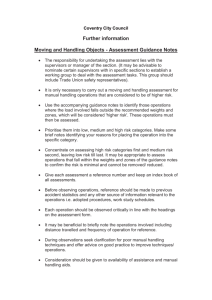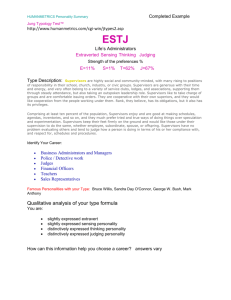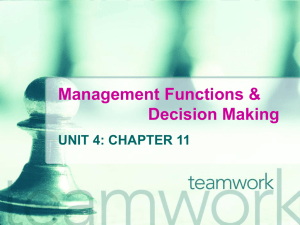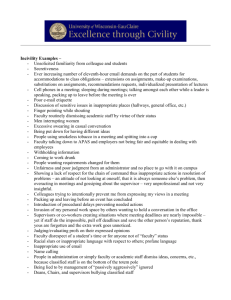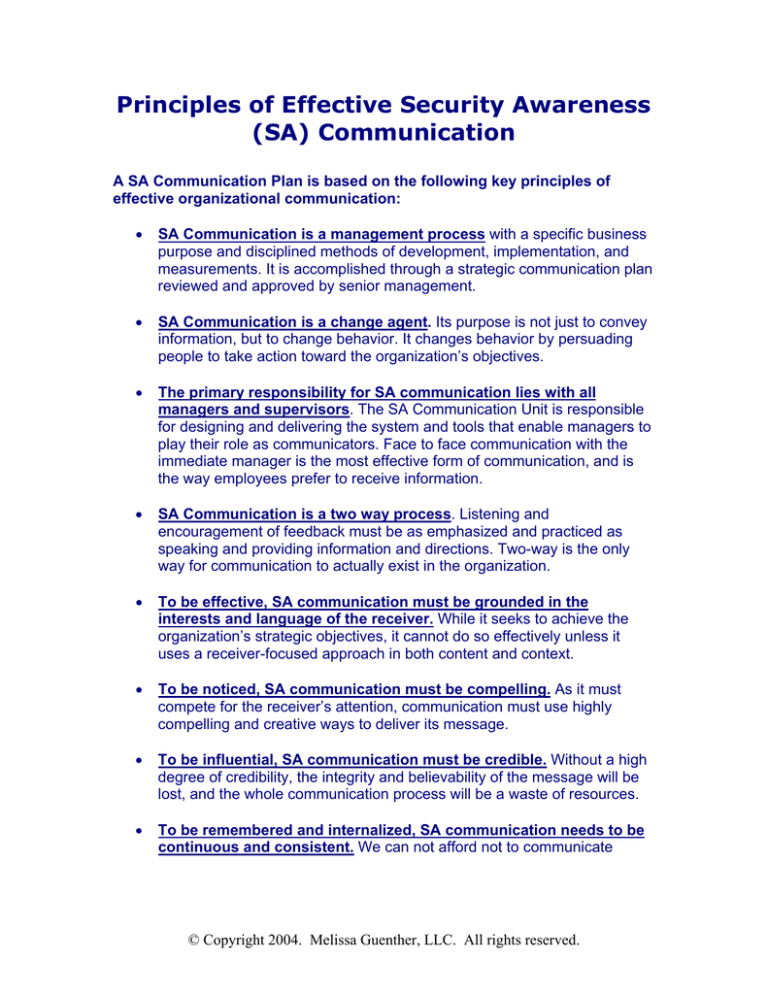
Principles of Effective Security Awareness
(SA) Communication
A SA Communication Plan is based on the following key principles of
effective organizational communication:
•
SA Communication is a management process with a specific business
purpose and disciplined methods of development, implementation, and
measurements. It is accomplished through a strategic communication plan
reviewed and approved by senior management.
•
SA Communication is a change agent. Its purpose is not just to convey
information, but to change behavior. It changes behavior by persuading
people to take action toward the organization’s objectives.
•
The primary responsibility for SA communication lies with all
managers and supervisors. The SA Communication Unit is responsible
for designing and delivering the system and tools that enable managers to
play their role as communicators. Face to face communication with the
immediate manager is the most effective form of communication, and is
the way employees prefer to receive information.
•
SA Communication is a two way process. Listening and
encouragement of feedback must be as emphasized and practiced as
speaking and providing information and directions. Two-way is the only
way for communication to actually exist in the organization.
•
To be effective, SA communication must be grounded in the
interests and language of the receiver. While it seeks to achieve the
organization’s strategic objectives, it cannot do so effectively unless it
uses a receiver-focused approach in both content and context.
•
To be noticed, SA communication must be compelling. As it must
compete for the receiver’s attention, communication must use highly
compelling and creative ways to deliver its message.
•
To be influential, SA communication must be credible. Without a high
degree of credibility, the integrity and believability of the message will be
lost, and the whole communication process will be a waste of resources.
•
To be remembered and internalized, SA communication needs to be
continuous and consistent. We can not afford not to communicate
© Copyright 2004. Melissa Guenther, LLC. All rights reserved.
Executives’ Roles and Benefits:
Roles: The organization’s executives have several key roles to play in
the organizational communication process:
•
They review, give input to, and approve the Communication
Plan, including the strategic communication objectives to be
achieved.
•
They articulate the organization’s strategy, business plan,
interests, and actions in a variety of communication
opportunities and media, including town meetings, department
meetings, speeches, presentations, memos, and interpersonal
interactions with stake-holders.
•
They create and welcome opportunities for them to listen to the
ideas, feedback, and issues raised by stakeholders.
•
They act as role – models for the essence of the messages
conveyed by the communication process, to enforce the vital
credibility aspect of organizational communication.
Benefits: The organization’s top leadership will gain the following
benefits from the implementation of the SA Communication Plan:
•
Organizational communication will enable top management to
explain their business strategy and goals to the stake-holders,
helping gain their support and alignment.
•
Communication uncovers hot issues and concerns on the minds
of key stake-holders, making it possible to address these issues
in timely manner to maintain good relationships with critical
constituencies, including customers, investors, employees and
the community.
•
Explaining the reasons behind certain executive actions and
changes helps gain employee understanding and support for
these actions.
•
Effective, open, and credible communication creates a culture
of trust, shared values, and accessible knowledge throughout
the organization. This facilitates faster action and higher
performance.
© Copyright 2004. Melissa Guenther, LLC. All rights reserved.
Managers / Supervisors’ Roles and Benefits:
Roles: Employee surveys have shown that people want to get the
important information affecting the organization and their jobs from
their immediate supervisor. This means that managers and
supervisors must fulfill this expectation by acting as the primary
communicators of business strategy and actions for their direct
reports. Managers and supervisors need to support the
Communication Plan and its messages, own it as their own plan, and
be prepared to explain it and answer staff questions about it.
To do this effectively, they need to work closely with the
Communication Department, including attending meetings or training
for this purpose. Ultimately, the managers and supervisors are
accountable for the two-way communication process within their
areas.
Benefits: Managers and supervisors gain the following benefits from
the organizational communication process and plan:
•
They become better able to answer questions from their own
staff about company business and actions, enhancing their
status in the process.
•
Managers and supervisors will build better relationships with
their staff by practicing open two-way communication,
including raising the issues voiced by their staff to upper
management.
•
Armed with the critical information about company strategy
and goals, managers and their staff will be better able to
contribute effectively to achieving these goals, enhancing their
own value to the organization.
Employees’ Roles and Benefits:
Roles:
Employees have an important role to play as well in implementing an
effective SA communication plan. As supervisors are the primary
communicators for their staff, front-line employees are the primary
communicators for the customers. In fact, to the customer, the frontline employee is the organization. Therefore, employees need to be
able to communicate certain messages to the customers they serve
which are consistent with the organization’s strategy. Employees
have opportunities to position the organization’s efforts regarding
© Copyright 2004. Melissa Guenther, LLC. All rights reserved.
security and privacy as a competitive edge. They also need to work,
contribute and achieve in ways that produce results consistent with
the organization’s goals.
Here’s an example: For those that work in a Call Center and take
Credit Card Information from a caller in order to process an order, it
is prudent to not write any Credit Card number down. It is better to
request that the customer repeat the number. If the customer states
that they had already provided the information, it is a wonderful
opportunity to simply state, “Yes, however, in order to protect our
customers privacy, we never write those numbers down. May I have
it again, please.” That’s a very subtle message to let the customer
know that your organization does not just pay lip service to their
privacy. It indicates that you’ve put words into action!
In addition, employees play the important role of ambassadors of
their organization for the public. Anywhere they go, they might be
asked where they work, and they will be able to communicate
positively about their organization’s security and privacy , enhancing
its reputation and ability to attract customers and employees.
Benefits:
By having a full understanding of what the organization is all about,
its mission and vision, its strategy and its goals, especially in regards
to security and privacy, employees can shape and redirect their work
efforts, their ideas for improvement, and their energies toward
actions that help the organization succeed. This can reflect better on
their own opportunities for advancement within the organization. It
also equips the person with better knowledge about the business in a
way that benefits the professional development of the person and
ability to gain more responsible positions whether inside or outside
the organization.
In addition, having the big business picture in sight, employees will
be better able to see the value of their work, and gain an
understanding and appreciation for how they contribute to
organizational success. This provides stronger personal and
professional satisfaction for the working individual and teams.
© Copyright 2004. Melissa Guenther, LLC. All rights reserved.


